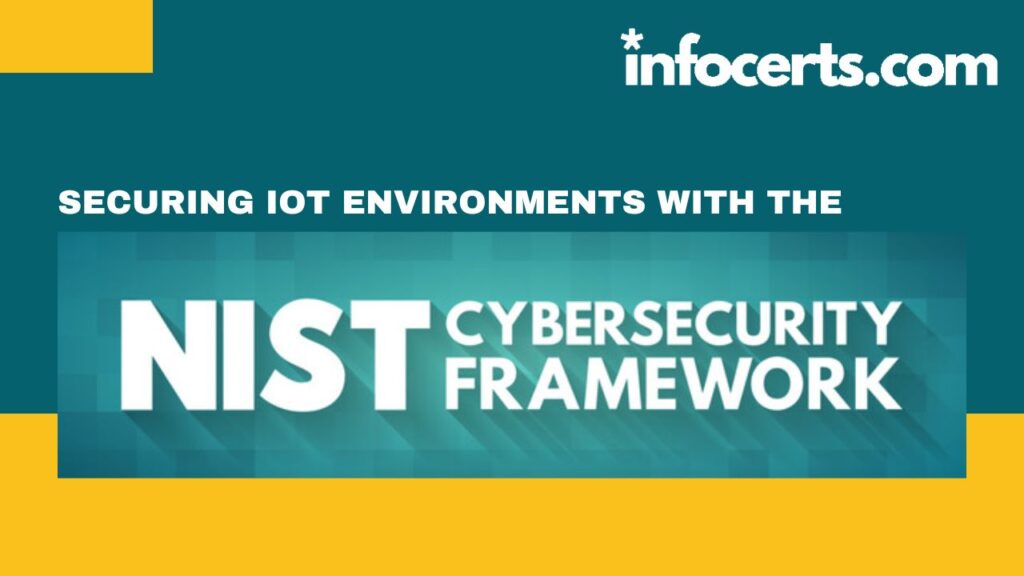Introduction: The rapid proliferation of Internet of Things Securing IoT with NIST has revolutionized various industries, enabling greater efficiency and convenience. However, the widespread adoption of IoT also introduces significant cybersecurity challenges. To effectively address these concerns, organizations can turn to the NIST Cybersecurity Framework (CSF). In this blog post, we will explore how the NIST CSF can be leveraged to secure IoT environments.
- Identify: The first step in the NIST CSF is to identify IoT devices and associated risks. Organizations must conduct a comprehensive inventory of IoT devices, including their functionalities, communication protocols, and potential vulnerabilities. This step enables a better understanding of the security landscape and helps prioritize Risk Mitigation efforts.
- Protect: To protect IoT environments, organizations should implement security measures based on identified risks. This includes establishing strong Access controls, ensuring secure communication channels, and implementing encryption mechanisms. Additionally, organizations should regularly update IoT device firmware and apply security patches to mitigate known vulnerabilities.
- Detect: The NIST CSF emphasizes the importance of detecting cybersecurity incidents in a timely manner. For IoT environments, organizations can deploy network monitoring tools to identify unusual activities, anomalous behaviors, or potential intrusions. Anomalies may include sudden spikes in data traffic, unauthorized device connections, or unusual communication patterns.
- Respond: In the event of a cybersecurity incident, organizations should have a well-defined response plan. This plan should outline the steps to be taken to mitigate the impact, contain the incident, and restore normal operations. Organizations should establish Incident Response teams and conduct regular drills to ensure readiness.
- Recover: The final step in the NIST CSF is to focus on recovery and restoring operations to a secure state. Organizations should have a robust backup and disaster recovery strategy in place to minimize downtime and data loss. Regularly testing and updating backup systems are crucial to ensure their effectiveness when needed.
| NIST Cybersecurity Framework Steps | Actions for Securing IoT Environments |
| Identify | – Conduct a comprehensive inventory of IoT devices<br>- Identify functionalities and potential vulnerabilities |
| Protect | – Implement strong access controls<br>- Ensure secure communication channels and encryption<br>- Regularly update device firmware and apply security patches |
| Detect | – Deploy network monitoring tools to identify anomalies and unusual activities<br>- Monitor IoT device logs for suspicious behavior |
| Respond | – Develop an incident response plan<br>- Establish incident response teams<br>- Conduct regular drills to ensure readiness |
| Recover | – Implement robust backup and disaster recovery strategies<br>- Regularly test and update backup systems<br>- Analyze incidents for lessons learned and improve security measures |
Conclusion: Securing IoT with NIST environments is a complex endeavor, but the NIST Cybersecurity Framework provides a structured approach to address these challenges. By following the framework’s five core functions – identify, protect, detect, respond, and recover – organizations can enhance the security posture of their IoT ecosystems. Implementing the NIST CSF not only safeguards sensitive data and systems but also fosters trust among IoT users and stakeholders. As the IoT landscape continues to evolve, organizations must prioritize cybersecurity and leverage frameworks like the NIST CSF to stay ahead of emerging threats and vulnerabilities.
FAQs
- What is the NIST Cybersecurity Framework?
- Why is securing IoT environments important?
- How can organizations identify risks in their IoT environments?
- What are some security measures organizations can implement to protect IoT environments?
- How can organizations detect cybersecurity incidents in IoT environments?
——————————————————————————————————————–
Infocerts, 5B 306 Riverside Greens, Panvel, Raigad 410206 Maharashtra, India
Contact us – https://www.infocerts.com

